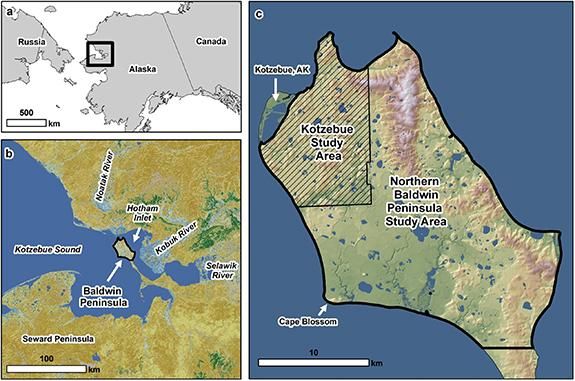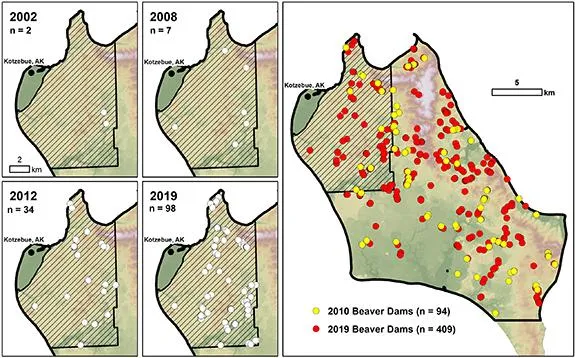Beavers Are Accelerating Climate Change in Alaska
As the Arctic warms, the furry animals are moving in—and redeveloping
/https://tf-cmsv2-smithsonianmag-media.s3.amazonaws.com/filer/02/1f/021fe597-fb1d-4d81-851f-433653fbc72f/beaver_in_alaska.jpg)
North American beavers are one of the few animals that radically modify their habitats to survive. Using their powerful front teeth, the fuzzy creatures will gnaw at trees, build watertight dams and flood different areas to construct their elaborate underwater lodges.
However, this penchant for redevelopment has its downsides. New research suggests that beavers in Alaska are dramatically altering their landscape much faster than previously thought—and with potentially devastating effects, reports Katie Hunt for CNN.
In a study published last month in Environmental Research Letters, a team of scientists from University of Alaska, Germany’s Alfred Wegener Institute (AWI) and the University of Minnesota used satellite images to track the expansion of beavers into the Alaskan tundra. As the area warms due to climate change, the beavers have been spotted moving into areas further north than ever before, as Kendra Pierre-Louis reported for the New York Times in 2017.
In this latest study, lead author Benjamin Jones and his team counted the number of beaver dams in a 100-square-kilometre area near the town of Kotzebue, on Alaska’s Baldwin Peninsula. They recorded 98 dams in 2019—up from just two dams in 2002, or a 5,000% increase. The number of dams in the surrounding Peninsula region also grew at a similar rate, according to Cosmos magazine.
“We’re seeing exponential growth there,” Ingmar Nitze, a scientist with AWI and co-author of the study, tells Cosmos. “The number of these structures doubles roughly every four years.”
The surface of the Kotzebue region covered by water also grew 8.3 percent during a 17-year period. Scientists attribute about two-thirds of that growth to the beaver’s activity, per CNN.
As Jan Wesner Childs reports for Weather.com, when beavers create their dams, they flood areas with water that is warmer than the surrounding ice. This accelerate the melting of the Alaskan permafrost, the layer of ice and dirt that stays frozen year-round. Melting permafrost releases large amounts of trapped greenhouse gases like carbon and methane into the atmosphere, which can accelerate the rate of climate change.
The thawing of the permafrost also threatens forests and human settlements, such as underground pipelines or the foundations of buildings. “When you start flooding areas with permafrost you immediately trigger permafrost degradation,” Ken Tape, a professor at the University of Alaska in Fairbanks who co-authored this recent study, explained to the Times in 2017. “You start thawing the frozen ground that’s holding the soil together, and that water and soil and other things are washed away.”
Humans are still the primary drivers of climate change by a long shot—but beavers are exacerbating the process, as Pierre-Louis explained in 2017.
Beavers seem to be flocking to the warming Arctic tundra for a few reasons: they have no predators in the region, and a warming climate means more vegetation for food and dam-building materials, per CNN.
Nitze tells Cosmos that the team hopes to expand the scope of their research to study beavers’ activites in other Arctic regions, such as northern Canada, where they suspect the creatures are having a similar impact.
It’s hard to know how damaging the beavers’ activity will be in the long term, Nitze says: “Granted, the frozen soil could theoretically bounce back after a few years, when the beaver dams break; but whether or not the conditions will be sufficiently cold for that to happen is anyone’s guess.”
/https://tf-cmsv2-smithsonianmag-media.s3.amazonaws.com/accounts/headshot/nora.png)


/https://tf-cmsv2-smithsonianmag-media.s3.amazonaws.com/accounts/headshot/nora.png)